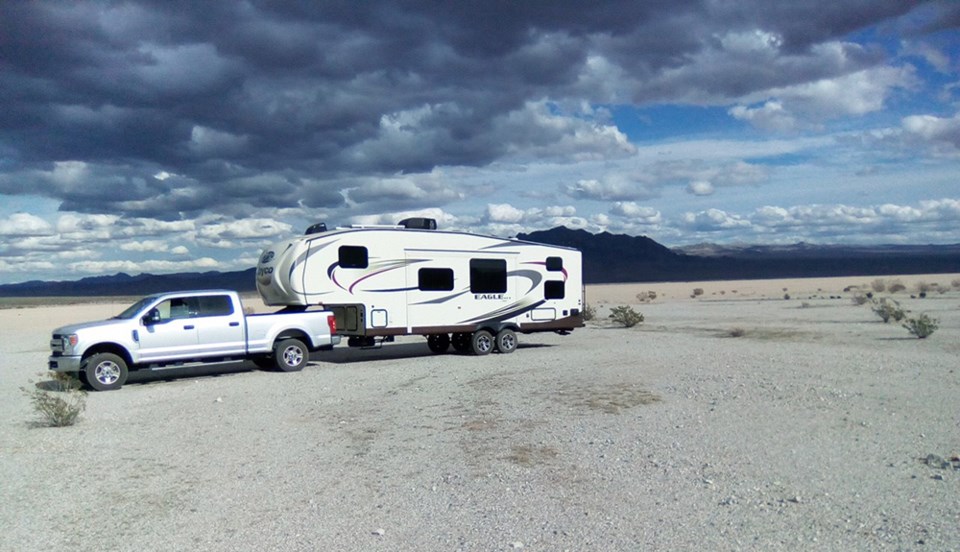Since January 2018, Pierre along with his wife Kerry and their 12-year-old Labrador Kodi have been living and travelling throughout North America in their 32-foot fifth wheel – mostly living off the grid using solar power.
To begin with, when we started this adventure, neither of us had any experience with RVs – so if you’re a newbie and think the idea of using an RV for even simple weekend use is too daunting, well, keep reading because I’ll share with you what we learned and hopefully minimize your angst and save you a few dollars along the way.
As you’ll see with RVing, there’s a lot of effort spent finding solutions to situations before they become problems. And in RVing 101, I’ll try to sprinkle a few helpful tips along the way.
First, what type and length of RV to purchase? Really depends on what you’re planning to use it for. Stopping at just one location and then heading home? Living in it for an extended period of time in numerous locations? Staying at campsites (full or partial services to water, electricity, sewage) or boondocking (no services)? Wish to visit other attractions or not planning to venture beyond your campsite? Summer use or all seasons? How many people will be living in it? Need to transport an ATV or other toys? What’s your budget? Motorhome? Trailer? Fifth wheel? Van?
These are all important questions to discuss prior to selecting your RV. Make a list of what you must have and another of what would be nice to have. For us, we had five items on our must have list: #1. Two doors. (If one door didn’t work, we could still access the RV.) #2. Use of a detachable vehicle to see the sights. (From the front bumper of the truck to the back carrying cage of the fifth wheel we were 50ft long. Hard to park in a town or city. Easy when you detach the truck from the RV.) #3. Ability to build a home office inside the RV. (We specifically purchased a fifth wheel that had bunk beds. We ripped them out and built a nice home office in its place.) #4. Not too long and not too small. (We settled on 32 feet – it’s turned out to be the perfect length for us.) #5. Must be able to access the bathroom when the slides are in – you’d be surprised how many RV designs block you’re ability to use the bathroom when the slides are in. (Helpful tip: when checking out RVs, ask the dealer to bring in all the slides – you’ll get a great idea of which cupboards and doors are inaccessible to you. Trust me; you’ll truly appreciate this at some point in your travels.)
(Other add-ons such as solar panels, carrying cages, bike racks, ceiling fans, satellite dishes etc. will be discussed in upcoming columns.)
All the other decisions were a matter of whether or not we wanted to upgrade from the existing item, such as replacing the bedroom mattress. If you do replace your mattress, measure the length and width – don’t assume a queen size in an RV is the same as your home mattress. Also, ensure you have a mattress that you can easily lift since most RVs have a useful storage area beneath the bedroom mattress. (Helpful tip: condensation/moisture which leads to mold will occur between the mattress bottom and the panel of wood it’s resting on. We bought 10, 5-foot long, 2x2 pieces of wood that we placed between the mattress bottom and the panel of wood. This allowed air to flow under the mattress – and we’ve never had any issues with moisture. Also, you can add a preservative to the panel of wood.)
Overall, my advice is to rent an RV before you make that purchase, get a feel for what you’re getting into – and do a lot of research. The old Boy Scout motto works well here: Be Prepared.



